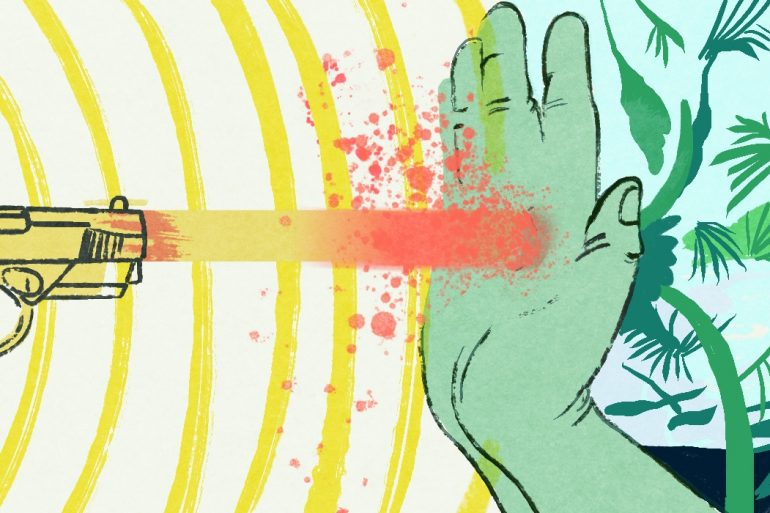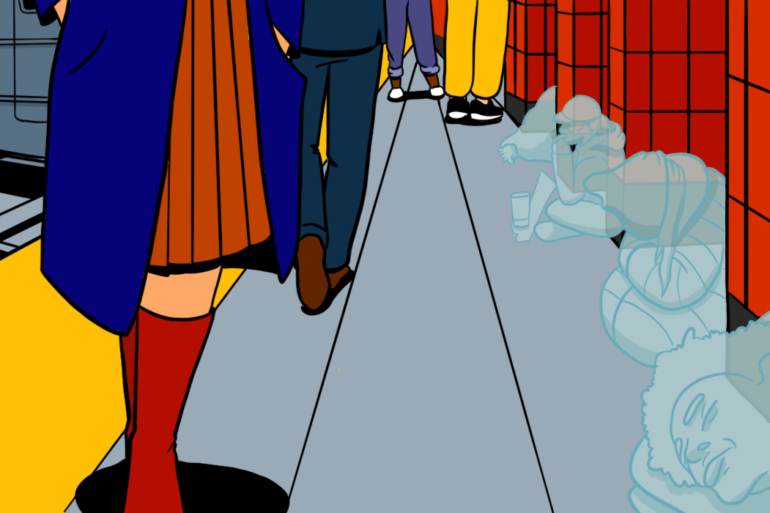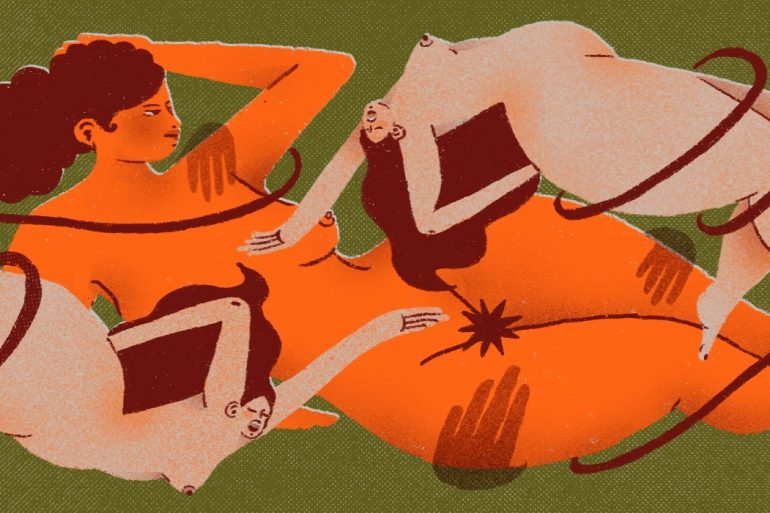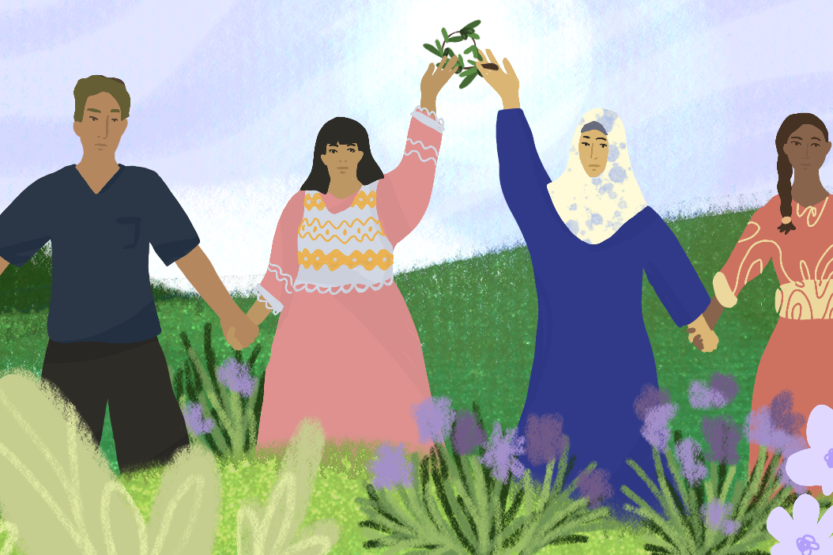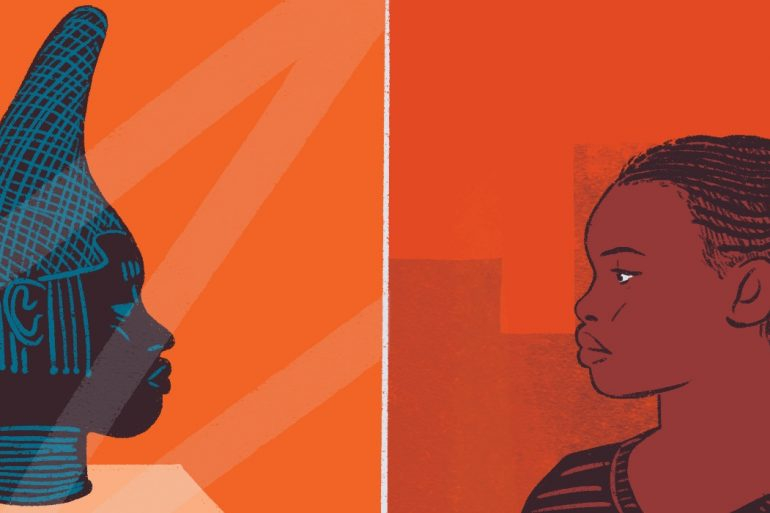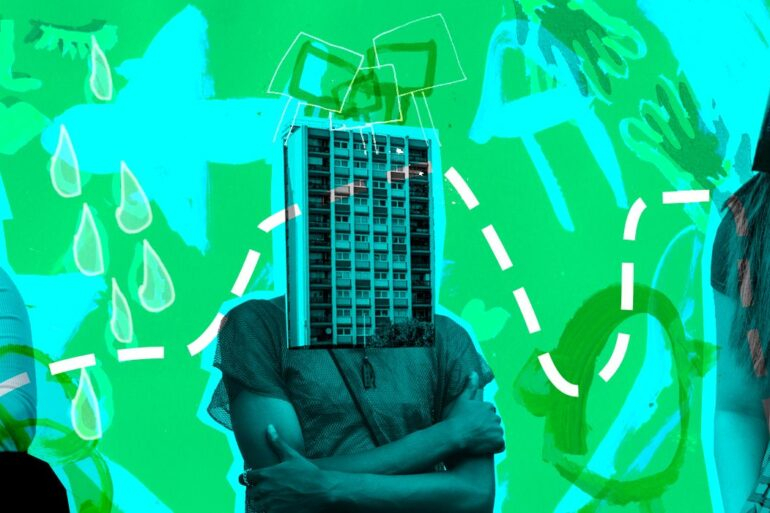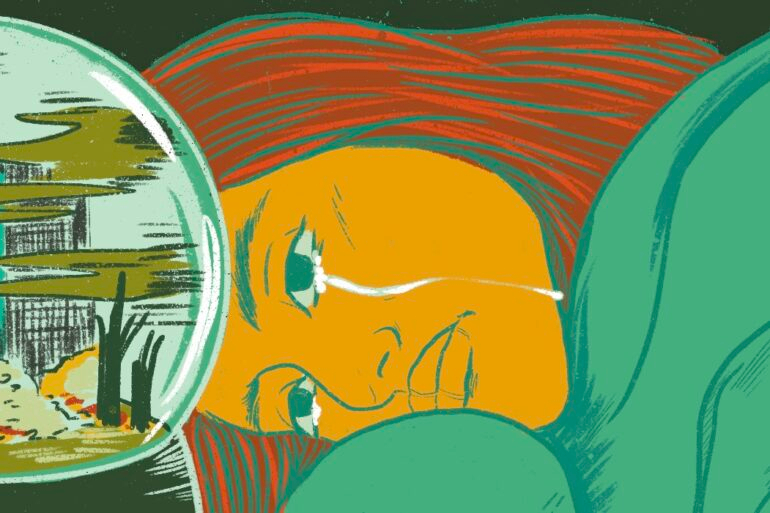My relationship with politics and activism has always been influenced by my upbringing, the almost innate sense of justice that governed much of what I understood growing up as a Punjabi Sikh in Britain to mean. The links between my upbringing and my politics felt so natural that it went unquestioned, until, in recent years, it became clear that the grounding of my politics in my identity was not seamless.
As a second (and a half) generation immigrant and Sikh woman, who has grown up in a middle-class suburb of a South London borough – an area without a flourishing Punjabi population – the politics of upwards social mobility which motivated and guided my parents felt redundant to me. At the same time, the lures of high paying, high prestige careers and lifestyles remained the ultimate expectation of many of those around me. Standing at the threshold between the academy and the rat race, I found myself politically lost at sea.
Within the first minute of our conversation, activist, organiser and writer Amardeep Singh Dhillon covers all the areas of discussion that I have been turning over in my own head with increasing urgency over the last few years; the myth of the model minority, the fear and exceptionalism that has stultified inter-community solidarity among British South Asians, interactions of race and class in the British Sikh community, and the history of British South Asian radicalism and resistance.
Perhaps because of similarities in our cultural and political backgrounds, throughout our conversation, I find myself returning to these questions that have characterised my political coming of age: where to find grassroots direct action within my community and how to grapple effectively with the whiteness of the activist spaces I had available to me. What should I expect? Is it naïve to want a return to the British South Asian movements of the 70s and 80s that so inspire me?
In many ways, Amardeep and I have followed a strikingly similar cultural and political path. We are both from Punjabi Sikh families who were part of the wave of migration to the UK in the 1960s, and who faced the harsh realities of post-war race relations. We have both attended prestigious, predominantly white universities, and both started to engage in very white activist spaces in our early twenties. Like Amardeep, I have also been deeply moved and influenced by our Sikh heritage and the histories of radicalism and resistance from within British South Asian communities in the three decades or so following the influx of immigration into Britain from the early 1960s.
They explain to me the origins of their politicisation, growing up in a post-9/11 world where the racism they encountered meant that “political engagement never really felt optional”. More recently, they have been motivated by their queerness to seek out activism and community within a radical queer politics, all grounded in the “tentative internationalism” of someone growing up South Asian and Sikh in Britain.
Like myself and many others, Amardeep’s family built lives for themselves amidst racism and violence, but their trajectories do not explicitly intersect with the radical activism that characterises many studies of the British Asian diaspora. Besides their nana ji (maternal grandfather), who had been a member of the Indian Workers Association, Amardeep describes their family as having a “pretty typical” experience of migration to the UK in the sixties and working hard to establish themselves.
The myth of the ‘model minority’
Here, Amardeep strikes upon the subject of much of my frustration – the myth of the model minority, the pernicious idea that different minority communities should compete to be the ‘best’, the most productive, most assimilated, or most white, in order to be accepted as legitimate by society at large. I call it a myth because of the cruel reality that no matter how much the idea of the model minority is internalised by so many communities, desperate for acceptance and stability, ultimately no level of assimilation will dissolve racial prejudices against immigrant communities. And nor should these communities be made to take responsibility for preventing harm being done to them.
The model minority myth reinforces the idea that communities that experience discrimination or rejection have only themselves to blame for not assimilating or contributing enough to the society they have joined – putting the onus on the community to be ‘one of the good ones’ to avoid harm, rather than tackling the prejudices of the society at large. Throughout my life and my quest for a satisfactory politics, the politics of respectability – reinforced by the successful social mobility and resulting middle-class situation of my parents’ generation – has complicated my relationship with activism.
Ideas of exceptionalism within the British Sikh diaspora, compounded by the myth of the model minority and successful social mobility for some – crucially, not all – has in some ways created a fierce sense of protectionism of community identity as a model ethnic minority. Detailing their experience growing up, Amardeep discusses the barriers of fear that have, according to them, limited interreligious political solidarity following stories of attacks on Sikhs misidentified as Muslims.
“Growing up hearing stories, post-9/11 in particular, about the attacks on Sikhs in the US and a few that had happened here. There was a call within Sikh communities to say, ‘we’re not Muslims, and it’s really important that you know that we’re not Muslims’, which I think we’ve misguided. And the logic behind that is that we’re the ‘right kind’ of a brown person.”
In relation to the Sikh diaspora in particular, Amardeep highlights the colonial origins of the myth of the model minority which has shaped the community’s relationship with British society, and with other racialised communities in Britain today.
British understandings of the Sikh community have long been influenced by the designation of Sikhs as a ‘martial race’ under British colonial rule – this took greater significance following the 1857 rebellion against the British, when the notion of recruiting loyal ‘races’ to the colonial army was seen as vital for the survival of the British in India. The labelling of Sikhs as a martial race meant that they continued to be targeted for British army recruitment into the 20th century, including during the Second World War.
The assertion of the British that all Sikhs were ‘strong, reliable, and followed orders’ meant that post-war they were seen as ideal workers by some employers. One defining reason why Southall, known as Little Punjab, has such a big Punjabi-Sikh community is because a local factory owner had served with Sikhs during the Second World War, and viewed them as trustworthy employees .
But, as Amardeep points out, “implicit in that [label] is – who is not trusted to be hired? Why were Black people not recruited in large numbers to factories like that? So that model minority myth is rooted in eugenics.”
Respectability vs radical struggle
With many British Sikh and other South Asian immigrant communities settling, the model minority myth became internalised and reiterated, and as the years went on dovetailed with many of the rallying calls of Thatcherism. Following years of relentless racism which accompanied the influx of racialised commonwealth immigrants in the 60s and 70s, Thatcherite individualism and its appeals to ‘self-starters’ and individual responsibility resonated with many South Asian immigrant families who retained a sense of pride at their resourcefulness and hard work. I would argue that it was the economic and social individualism popularised by Thatcher that goes some way to explain the phenomenon of the South Asian Tory that is so visible today.
Amardeep explains how the internalisation of the Thatcherite myth of individual responsibility, the ideas of now middle-class Sikh and South Asians in Britain about their own success has tainted their views of other immigrant communities, reinforcing the idea that ‘less successful’ communities are failing due to their inability or unwillingness to exhibit the characteristics of the model minority.
“There’s a really strong impetus to say the reason that we have been able to access social mobility is because of the work that we’ve put in and because of the suffering that we’ve undergone – in a way that completely eludes the fact that people who are racialised differently and people who come from different places have been just as oppressed…” they tell me. “And yet [they are] still not being given the opportunities to become small business owners, for example, or to get preferment within education.”
Amardeep also cites caste as a significant variable in determining the opportunities and level of discrimination faced, both by British Sikhs and in other British South Asian communities, highlighting the work of groups such as the Dalit Solidarity Network and South Asian Solidarity Group against casteism in Britain.
“Obviously there is a massive difference in terms of who’s been able to advance. There are loads of Punjabi Sikhs who are working class; who are asylum seekers; who are migrants; who are still at the sharp edges of this.” The myth of the model minority, as a story about class as much as one about race, does not encompass these groups, and so limits the capability of our community to undo the pernicious constraints of a politics bound by respectability, of being ‘one of the good ones.’
Subscribe to shado's weekly newsletter
Exclusive event news, job and creative opportunities, first access to tickets and – just in case you missed them – our picks of the week, from inside shado and out.

The impact of the model minority myth is laid bare in these attitudes towards success among British Sikhs and other South Asian communities, convincing us that success and failure in Britain is about individual hard work or laziness, rather than institutionalised racism or systemic oppression.
In contrast, the history of South Asian political movements in Britain is rich, radical, inspiring and, it feels, belongs to another reality entirely. In the 60s, 70s, and early 80s there were prominent South Asian labour movements, such as the strikes at Grunwick and Imperial Typewriters, along with social movements such as the Asian Youth Movements – community organisation for self-defence against racial violence – and the Bengali Housing Action Group (BHAG) in Tower Hamlets.
Though there were calls from some for respectability, this was effective community action, often involving South Asian immigrants of varying origins and against the background of a wider British Black Power movement, in response to the immediate challenges and dangers of a violent and overt racism. Many of these localised, direct political actions succeeded in their aims, and where they didn’t, they brought the struggles of the British Asian community to the fore of the consciousness of the British left.
Yet, as both Amardeep and I have seen in our own lives, the interpersonal and intercommunal solidarity of the early decades of life in the UK – both on the level of political activism and on a personal, practical level of community solidarity and mutual aid – has shrunk, arguably as the racism the diaspora has faced has moved from overt to more insidious.
As our community has gained access to greater social and financial currency and capital, these actions of solidarity which were so crucial to our very survival no longer became necessary. Instead, for many middle-class South Asians in Britain, a politics of radical solidarity and empathy seems to have been eroded by a politics of respectability and assimilation.
Perhaps the most obvious example of this is the prominence of South Asian Tory MPs and ministers, and a deeply discriminatory government helmed by a Prime Minister and (former) Home Secretary whose parents arrived in the UK at a similar time to my own. It cannot be enough for our communities to accept hollow representation as the pinnacle of political success; the racism of the current government is arguably made more damaging, not less by the presence of non-white leaders.
Bridging siloed communities
And so, I pose the question to Amardeep – when did other communities become people we don’t fight for?
“I think it’s less of a case that there is a specific point at which those solidarities stop existing” they reply. “It’s more the fact that they become less materially necessary for large sections of the community at exactly the same time as race or racial equality is adopted under neoliberalism through this discourse of representation, through this discourse of [racism as individualised] discrimination,” they answer.
That is, once many British South Asian families started moving into the middle classes – as a result, we were told, of our individual discipline – we saw other immigrant communities who hadn’t gained the same social mobility as being unworthy of help, especially given the pride felt by many South Asians at not accepting ‘handouts’ from the state.
In the absence of widespread grassroots political activism in my immediate social sphere growing up, perhaps naturally, university became the home of my first forays into protest and activism. Like Amardeep, my introduction to the practice of direct action was in a very white context, and for myself this has at times been unfulfilling. I have put as much time into engaging in direct action at university as I have analysing and agonising over the attitudes and involvement of my white peers.
I have sat uncomfortably with the suggestion that a successful campaign may necessitate the exclusion of white activists, while also bearing witness to their white saviourism. I am aware that, at times not for lack of trying, some white individuals simply have given no time or space to finding another, more intersectional framework within which to understand their politics in a very noisy world. But I also know that a wealth of clear and free information about any political issue you can imagine is only a few clicks away. The jostling of these concurrent, incongruent observations has at times sapped my energy and obscured my focus on the issues at hand.
Amardeep reminds me that this is also true for many non-white activists and actors in Britain’s political landscape.
“Whether we’re talking about migrant solidarity spaces, or direct-action spaces, or anti-police spaces, or anti-fascist spaces, one of the ways that whiteness continues to reconfigure itself is through a kind of protectionism, which says that, well, people of colour shouldn’t have to be doing this work, they shouldn’t have to be on the front lines…,” they explain. “And I think that there’s a truth to white people needing to use their privilege in particular ways, but I think also there’s an infantilisation that happens with that.”
The dangers of this paternalistic stance, as a variation of the typical white saviourism that can be seen in activist circles, are stark. Amardeep argues that this is true for the rise of Hindutva, or Hindu nationalism, in Britain, highlighting that some on the white, anti-racist left have struggled to identify Hindutva as a form of racism or harmful far-right politics because its proponents are not white.
As a result, they contend, this white, anti-racist left is unable to effectively counter its widespread growth in Britain, blinded by “the language of Indigeneity and decolonialism that Hindutva utilises very effectively.” We are left with a far-right British politics where Hindutva has found allies in white supremacy and a leftist politic too wedded to binary thinking about race, leaving racism and tyranny unnoticed and unchallenged.
What is clear is that interracial and intercommunal political solidarities are vital if the British activist left are to have any hope of material change when it comes to issues like Hindutva in Britain. This and other issues require community organising among British Hindus, Sikhs, Muslims and other groups, in order to understand exactly who and what we are fighting for. This is often where difficulty arises. Such communities, which engage in intra-communal mutual aid and political organisation, are alienated from white-dominated political organising.
As Amardeep describes, bridging the gap between this political fracture, with political action happening on different registers, is far from simple. As activists of colour, we find ourselves choosing between one form of political organisation or another – community, or collaboration?
Creating activism of colour
How, then, do we approach political spaces as activists of colour?
The issue of so-called ‘white guilt’ in British left-wing political activism is often a pall that hovers over this kind of interracial solidarity. In my experience, the proliferation in the last few years of reckonings with Britain’s colonial past has led to inertia, and a disproportionate focus on retrospective navel-gazing through reparations to former colonies, or bad faith interpretations of sensitive and critical re-evaluations of British colonialism as vandalism and fictionalisation.
I have been frustrated by the fact that so much about engaging in left-wing politics in white spaces has involved an almost obligatory preface of white guilt and self-flagellation. Much of my despair, and at times disillusionment, with the role of grassroots political activism – especially within the ivory towers of an ancient British university – has stemmed from feeling overwhelmed by an over-indulgence in white self-pity, and left-wing student activism getting stuck in the thicket of discussion and discourse.
From what I have witnessed, and the stories I have heard, asking difficult questions about your position in the politics you are engaging with is a necessary and often beautiful thing, but the line between introspection and indulgence is one I have seen crossed too many times. While my politics, like Amardeep’s, are deeply rooted in ideas of the political collective, and the educational and practical power of that collective, I have often wondered how this key part of my political identity fits with my exasperation with white guilt.
I am also acutely aware of the dangers of paternalism relating to my own privileges when it comes to organising, as a middle-class, fair-skinned, well-spoken, university-educated member of the British Sikh ‘model minority’, with my own feelings of inadequacy regarding my lack of experience or proximity with many of the struggles I feel most passionately about. As Amardeep points out, however, the organising space as a place for mutual education and struggle should be freed from the expectation that it and the people within it will heal our own political discomforts.
“This organising space is for us to struggle, for us to be uncomfortable, for us to educate each other and attempt to construct a community where we can hold each other accountable. But healing doesn’t happen in that space.” In order to construct a truly reformative and powerful movement, while we may find our support networks in activist circles, the work of political action and struggle cannot be successful if it also must carry the burden of making us feel better about ourselves.
I think that white activists and activists of colour in leftist political organising are beginning to come to terms with this: acknowledging and learning to accept that our politics will necessarily involve personal discomfort. And this is especially significant when it comes to creating the intercommunal solidarity required to combat so many problems of racial, religious, sexual and other differences that our politics demands of us – none of us can do it alone.
While the concept of every individual bringing something unique and vital to an organisation may sound like it has all the nuance of an action blockbuster, Amardeep highlights the need to commit to each of our own discomforts – middle class activists committing to being “class traitors” through their work, “white comrades [committing] to being race traitors”. They point to the way in which what may be uncomfortable privileges can, perhaps counterintuitively, provide “politically generative” opportunity and benefit, highlighting that as “middle class, well-spoken, South Asian” people, in certain contexts we are ultimately likely to be ‘less vulnerable’ to police violence than certain kinds of white people.
Equally, they highlight, we as individuals should be mindful of tokenism in activism, acknowledging that while we are engaging with politics as people of colour, our experiences are specific to our middle-class background. This blindness to class can therefore blinker well-meaning and otherwise successful political action. Amardeep points to the example of predominantly white or middle-class organisations in the migrant solidarity movement that have in the past been unaware of the organising happening in detention among people seeking asylum, and to the significance of recognising this organic political organisation and working alongside, rather than talking at and about, the people they want to help.
The question of how to inspire depoliticised elements of British South Asian communities remains a complex one – the problem of how to align different registers of organisation remains, as does the influence of the myth of the model minority and respectability.
Amardeep shares their sobering reflection that the ensuing economic downturn may go some way to breaking the conviction held by many middle-class British South Asians that their model behaviour means that the only way is up, that their children and children’s children are only going to be ever wealthier. But this, they suggest, may forge links between hyperlocal networks of organisation and mutual aid – like langar offered by the Sikh community – and more broad political action to tackle systemic causes of poverty, inequality, or discrimination through protest and other forms of direct action, rather than just symptoms.
One organisation that Amardeep points me towards is Nijjor Manush in East London, a Bengali led anti-gentrification organisation. They are a clear example of the power of grassroots, working-class South Asian politics, led by Bengali communities directly affected by the gentrification in Brick Lane and Tower Hamlets, and engaging with the white left on their own terms.
My conversation with Amardeep made the links between a Sikh cultural, religious and political identity and a radically empathetic political activism beyond the community feel urgent, and natural, and possible. I have met and worked with British South Asians, like Amardeep, who have inspired and challenged me, whose politics and activism stem from their experiences as racialised people, and the profound sense of justice that this has ignited in them. However, the cultural and political landscape I have found myself in over the last few years is one in which British South Asian involvement in activism and politics seemed to be an exception, or heavily caveated by existing intracommunity organisation.
The realities of shifting class positions and political outlooks within my community have, in many ways, left me focussing less on creating tangible change and more on how to reconcile a trepidation towards activism within my community that I understand with a complacency that I cannot justify, a level of introspection that often felt selfish or indulgent. But the most valuable lesson of my fledgling activism, as this conversation reminded me, has been that I cannot have all the answers – and that is what makes the links between communities and individuals so necessary, and so powerful.
What you can do
Here are some resources to help learn more about the histories of and present day radical British South Asian politics
Hear:
- Listen to the Working Class History Episodes on the Asian Youth Movements
- Listen to anything by Asian Dub Foundation, but especially ‘Free Satpal Ram’ and ‘Fortress Europe’
Read:
- Read Amardeep’s work on the allyship of Hindutva in Britain with white supremacists – White and Hindu Supremacists Are a Match Made in Heaven | Novara Media
- Read Striking Women by Sundari Anitha and Ruth Pearson (The Grunwick (1976-8) and Gate Gourmet (2005) strikes by South Asian women in Britain) and visit their website
- Article: Mohammed Z Rahman on art, solidarity and the power of dreaming
Do:
- Get involved with Nijjor Manush; Dalit Solidarity UK; South Asian Solidarity



